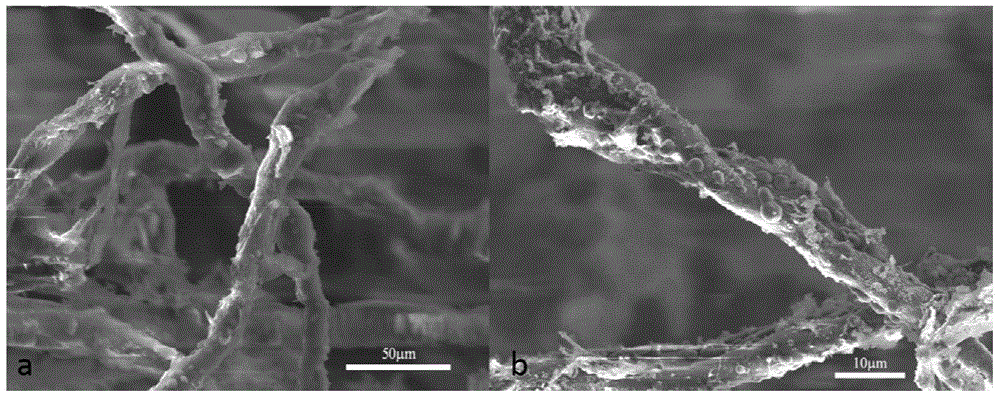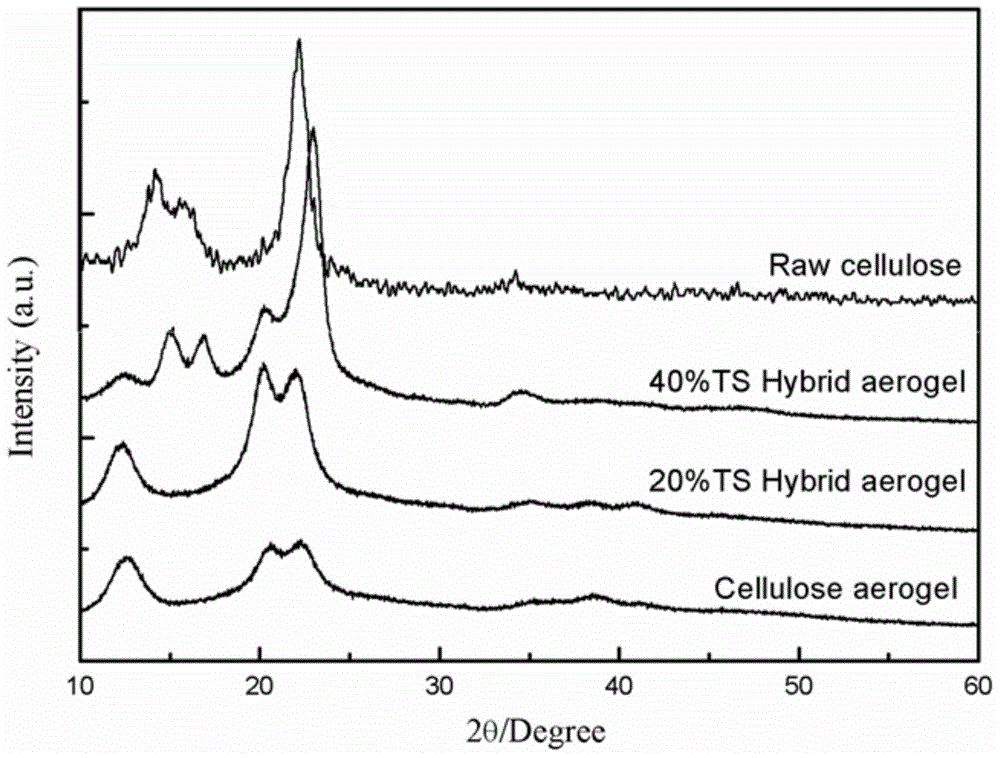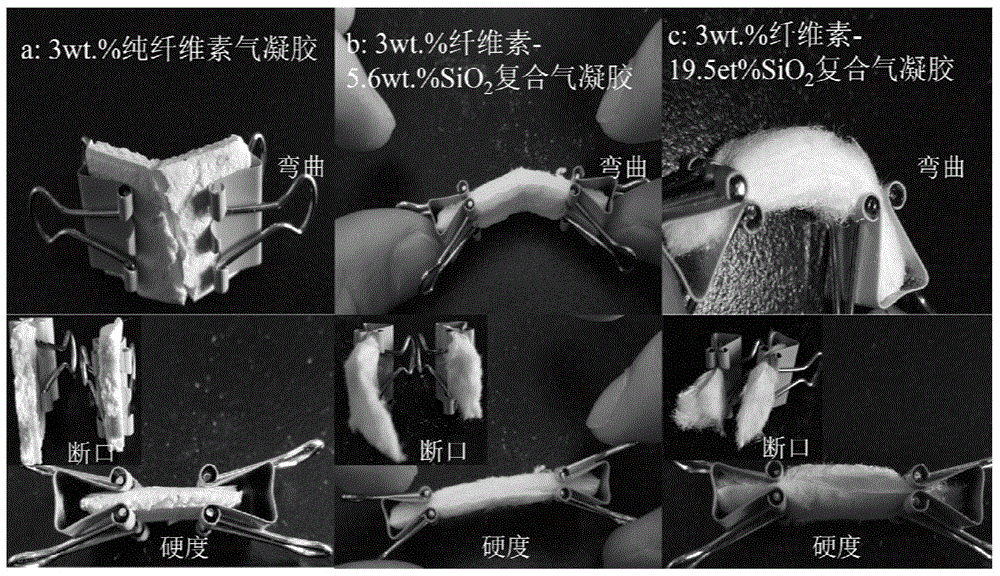In-situ preparation method of cellulose-silicon dioxide composite aerogel
A technology of composite airgel and silica, which is applied in the field of in-situ preparation of cellulose-silica composite airgel and the preparation of composite airgel, which can solve the problem of increasing the cost of composite materials, limiting the scope of application, and long-term preparation cycle and other issues, to achieve the effects of saving preparation costs, strong bond force, and a wide range of sources
- Summary
- Abstract
- Description
- Claims
- Application Information
AI Technical Summary
Problems solved by technology
Method used
Image
Examples
Embodiment 1
[0042] 1. After the cotton linter cellulose is rinsed repeatedly with distilled water and absolute ethanol, and fully dried, the cellulose, NaOH / thiourea / water solution (NaOH mass fraction 9.5%, thiourea mass fraction 4.5%, water mass percentage 83%), after pre-cooling at -15°C for 30 minutes, the cellulose was added to the NaOH / thiourea / water solution so that the mass percentage of the cellulose was 3%. Stir at 750r / min for 10min to obtain a cellulose solution, and then add 7.46ml of TEOS liquid (40TS%). Continue to stir to make the cellulose solution and TEOS solution evenly mixed.
[0043] 2. Sonicate the homogeneous cellulose / TEOS mixed liquid at 25°C for 20 minutes, then freeze at -18°C for 24 hours, place at room temperature, thaw, and age for 3 days. After repeated washing with dilute nitric acid and distilled water, the composite hydrogel was obtained, and freeze-dried to obtain the cellulose-SiO 2 Composite airgel, wherein the freeze-drying temperature is -65°C and ...
Embodiment 2
[0045] 1. Rinse the resinous cellulose with distilled water and absolute ethanol repeatedly and fully dry it, then take the cellulose, NaOH / urea / water solution (7% by mass fraction of NaOH, 12% by mass fraction of thiourea, and 79% by mass of water) , After pre-cooling at -18°C for 20 minutes, add the cellulose to the NaOH / urea / water solution so that the mass percentage of the cellulose is 2%. Stir at 750r / min for 10min to obtain a cellulose solution, and then add 7.46ml of TEOS liquid (40TS%). Continue to stir to make the cellulose solution and TEOS liquid mix evenly.
[0046] 2. Sonicate the homogeneous cellulose / TEOS mixed liquid at 25°C for 20 minutes, then freeze at -18°C for 24 hours, place at room temperature, thaw, and age for 3 days. After repeated washing with dilute nitric acid and distilled water, the composite hydrogel was obtained, and freeze-dried to obtain the cellulose-SiO 2 Composite airgel, wherein the freeze-drying temperature is -65°C and the pressure is...
Embodiment 3
[0048] 1. Rinse the bagasse cellulose with distilled water and absolute ethanol repeatedly, and fully dry it, then take the cellulose and NaOH / water solution (NaOH mass fraction 8%, water mass percentage 90%), and pre-cool at -12°C for 40 minutes Add cellulose to the NaOH / water solution so that the mass percentage of cellulose is 2%. Stir at 750r / min for 10min to obtain a cellulose solution, and then add 3.31ml of TMOS (40TS%) liquid. Then continue to stir, so that the cellulose solution and the TMOS liquid are evenly mixed.
[0049] 2. Sonicate the homogeneous cellulose / TMOS mixed liquid at 25°C for 20 minutes, then freeze it at -18°C for 24 hours, place it at room temperature, thaw it, and age it for 3 days. After repeated washing with dilute nitric acid and distilled water, the composite hydrogel was obtained, and freeze-dried to obtain the cellulose-SiO 2 Composite airgel, wherein the freeze-drying temperature is -65°C and the pressure is 10Pa.
PUM
 Login to View More
Login to View More Abstract
Description
Claims
Application Information
 Login to View More
Login to View More - R&D
- Intellectual Property
- Life Sciences
- Materials
- Tech Scout
- Unparalleled Data Quality
- Higher Quality Content
- 60% Fewer Hallucinations
Browse by: Latest US Patents, China's latest patents, Technical Efficacy Thesaurus, Application Domain, Technology Topic, Popular Technical Reports.
© 2025 PatSnap. All rights reserved.Legal|Privacy policy|Modern Slavery Act Transparency Statement|Sitemap|About US| Contact US: help@patsnap.com



